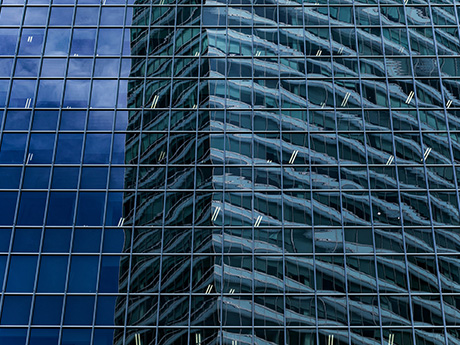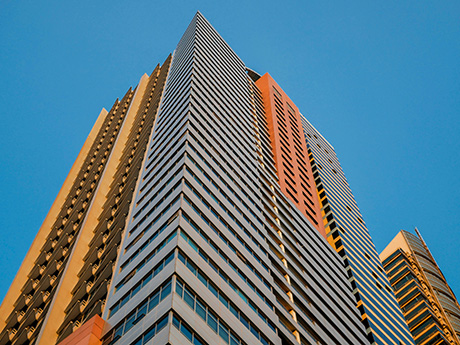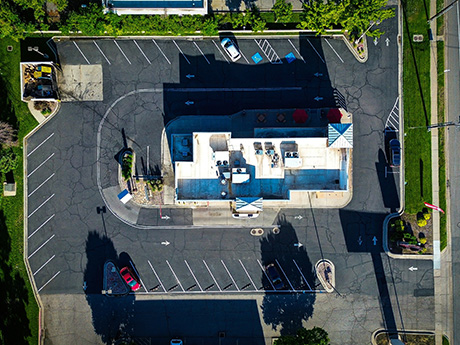In the first half of 2024, high interest rates led to decreased demand, higher vacancy rates, reduced construction starts and lower property sales in industrial and office, according to Lee & Associates’ 2024 Q2 North America Market Report.
Meanwhile, retail saw minimal development and continued low vacancies. Retail rent growth was particularly strong in the South and Southwest.
Finally, high demand for multifamily, coupled with a sudden influx of supply in the second quarter of the year, has created a market where outcomes are highly tied to region. Midwest and Northeast multifamily markets have remained stronger than their counterparts in the South and Southwest, while Western markets saw mixed growth.
Lee & Associates has made their full market report available here (with complete breakdowns of cap rates by city, market rents, vacancy rates, square footage information and more). The summaries for the industrial, office, retail and multifamily sectors below provide detailed insight into the trends and trajectories likely through the end of 2024.

Industrial Overview: Activity, Growth Checked by High Interest Rates
Industrial market performance across North America continued to downshift in the first half of this year. Although net absorption remains positive, demand for industrial space has fallen to the lowest levels in years as higher interest rates intended to reduce inflation also slow economic growth.
Net absorption in the United States totaled 23.9 million square feet in the first two quarters of 2024. It was down from 80.3 million square feet for the same period a year ago and is on pace for the slowest annual growth since the recession. Last year net absorption totaled 172.7 million square feet, a sharp drop from the 940 million square feet of pandemic-fueled growth in 2021-2022. Otherwise, growth for the decade since the recession has averaged 240 million square feet a year.
The recent contraction coincides with a series of 11 interest rate hikes by the Federal Reserve from March 2022 to July 2023, increasing the cost of federal funds from 0.25-0.50 percent to 5.25-5.50 percent. Inflation measured by the Consumer Price Index was down from a high of 9.1 percent in June 2022 to 3.3 percent in May. The U.S. GDP slowed to 1.4 percent in the first quarter of 2024 from a COVID-era peak of 5.8 percent in 2021.
The Fed’s rate increases have been tied partly to the 12-year low in home sales, depressing sales of furniture, appliances and building materials. This has forced the closure of some large distribution centers. Ashley Furniture, Home Depot and manufacturer Daltile all have closed facilities larger than 500,000 in 2024. Motivational Fulfillment, NFDI Industries and 3G Distribution Services have put big boxes up for sublease in major port markets this year. UPS plans to close 200 distribution centers globally through 2028 as it consolidates operations in its most automated facilities.
Not all merchants are backpedaling. Burlington Coat Factory, TJX Companies, Chuck and Dwight and Nestle USA have signed leases larger than 700,000 square feet this year.
Reduced demand has driven up the nationwide vacancy rate from a record low of 3.9 percent at the end of 2022 to its current 6.6 percent, which still is below the 7.1 percent historical average. Construction starts have plummeted. Quarterly completions will likely hit 10-year lows in mid-2025. The trend of slowing absorption has been broad-based across major U.S. markets. But there are exceptions. Markets throughout Florida, Virginia and the Upper Midwest are emerging from the pandemic with availability rates that are rising at a relatively slow pace and are among the tightest in the nation.
The lethargic transaction activity extends to property sales. The $23.3 billion in trades in the first half puts 2024 on pace for the lowest annual total since $40.3 billion in 2014. The pre-COVID annual sales average from 2012 through 2019 was $64 billion. The $149-per-square foot average sales price year to date, however, is up 2.6 percent from last year and is 136 percent greater than 2014’s average of $63 per square foot.

Office Overview: Weak Demand Plagues U.S. Markets
Weak net office absorption continues to dog U.S. markets, driving up the vacancy rate to a record 13.9 percent. Negative net absorption in the U.S. in the first half of this year totaled 28.4 million square feet, a 28 percent improvement from the same period a year ago. Notably, although the second quarter of 2024 was the eighth straight quarter with demand in the red, it only totaled negative 1.6 million square feet. It was the type of quarterly report that may give some landlords and investors hope that the market is bottoming.
Nevertheless, since April 2020, U.S. negative absorption totals more than 206 million square feet, which is four times the occupancy lost in the 2008 financial crisis and nearly three times the loss after the dot-com bust. Stagnating office attendance, slowing office job growth and about 25 percent of pre-COVID leases yet to expire give little indication that reversal of the trend is imminent.
U.S. office attendance averages perhaps 5 percentage points higher than a year ago, according to independent surveys by Kastle Systems and Stanford University. When that is combined with slowing growth of less than 1 percent for office jobs, it results in space requirements continuing to resettle downward with many tenants shrinking in place or consolidating into fewer locations as leases expire.
Over the last 18 months the amount of space taken by new tenants is 15-20 percent less than the average from 2015-19. The volume of sublease space has doubled since 2019 to 200 million square feet, half of which is vacant.
New construction is down with 10 million square feet of new inventory added in the first half of 2024, the least since 2013. But about 18 million square feet are slated for delivery in the third quarter. Starts totaled 4 million square feet in the first quarter of this year. The nearly 35 million square feet in 2023 starts were the least since 2010.
With only $13.4 billion in year-to-date sales, 2024 is on track as the nadir for trades since the 2008 recession. Debt maturities are posing challenges for owners and investors. There are about $206 billion in office loans maturing this year and $180 billion maturing in the next two years. Delinquency rates now at 7.4 percent could hit levels reached in the 2008 recession.
Retail Overview: Food-and-Beverage Tenants Drive Leasing Activity
Record low vacancy and availability combined with a cooling economy is working against retail tenant expansion in the United States. The U.S. vacancy rate was unchanged at 4.1 percent at the end of the second quarter of this year and up slightly from the record 4 percent rate at the close of 2023. Demand for U.S. retail space rose by more than 51 million square feet in 2023 for the third straight year of growth. But through June of this year, absorption totaled only 9.9 million square feet, down more than half from the same period a year ago.
Most recent growth has been driven by tenants from food-and-beverage, discount, health and beauty, off-price and experiential sectors. Food-and-beverage sector tenants accounted for nearly 20 percent of all leasing activity. Most of the focus is spaces of 2,500 square feet or less and overwhelmingly is driven by growth from quick-service restaurants.
Meanwhile, new retail development activity in the U.S. remains minimal with only 18 million square feet delivered in the first half. About 50 million square feet of space was completed last year, which is nearly 40 percent less than the 10-year average.
Since early 2020, there has been more than 210 million square feet of net absorption in the U.S. At the close of the first quarter of 2024 only 739 million square feet were available, nearly 15 percent less than the prior five-year average. Merchants leased up 205 million square feet in 2023, the least since 2000, but the decline is more about lack of supply than slowing demand. The median length of time to lease available space has fallen to slightly less than eight months, the fastest since 2008.
While moderating from the multi-decade high pace reached near the end of 2022, lease rates in stronger markets continue to increase at a healthy clip. Asking rents are up 2.5 percent over the last year to a new high of $25 per square foot. Rent growth is very much tied to growth geographically. Eleven of the 12 markets with the most rent growth are in the South and Southwest, whereas markets in the Northeast and Midwest with legacy supply and stagnant populations have underperformed.

Multifamily Overview: Strong Demand and a Surge in Supply
The U.S. multifamily market experienced a robust rebound in demand in the first half, driven by rising consumer confidence and diminishing recession fears. First-half net absorption totaled 287,635 units, 56 percent more than for the same period last year.
Despite the heightened demand, new supply continues to saturate the market. There were 335,872 units added in the first half, including a quarterly record 182,872 in the second quarter. This surge in supply has pushed up the vacancy rate to a record 7.9 percent. But with absorption on the rise, the overall market is expected to stabilize and improve by the end of the year. Detailed vacancy data reveals divergent trends among property segments.
Vacancy in Class A properties has escalated over the last 10 quarters. A surplus of premium-level units has driven up the vacancy rate for the high-end segment by 440 basis points in this cycle to 11 percent. Reduced demand for Class B apartments — attributed to elevated prices and economic uncertainty — has resulted in a more modest vacancy increase of 300 basis points. Vacancy rates among mid-priced properties have ranged from 4.2 percent in 2021 to the current 7.1 percent in the second half.
As the vacancy rate has increased by 310 basis points since 2021, multifamily rent growth has fallen from 9.4 to 1.1 percent. But performance can vary widely from region to region and not all markets posted increasing vacancies. In fact, vacancies declined in six markets — San Francisco, East Bay, Louisville, Norfolk, San Jose and Orange County — as net absorption outpaced new supply.
Additionally, by largely resisting overbuilding during the pandemic, the Midwest and Northeast markets have maintained greater supply-demand equilibrium and led the nation in rent growth. Metros with the biggest average gains include Louisville with the greatest annual effective rent growth of 5.1 percent. Year-over-year rents were up 4 percent in Dayton, 3.8 percent in Buffalo, Hartford and Tulsa, 3.5 percent in Washington, D.C., 3.3 percent in Cleveland, 3.1 percent in Madison and 2.9 percent in Northern New Jersey.
In contrast, the steepest rent declines showed up in the South and Southwest in the first half with -6.2 percent in Austin, -2.5 percent in Phoenix, -3 percent in Jacksonville, -3.3 percent in Raleigh, -2.8 percent in Atlanta, -2.6 percent in Sarasota, -2.5 percent in Phoenix and -2.4 percent in Charlotte. Rent growth in Palm Beach fell from 29 percent in 2021 to -0.8 percent in the second quarter.
More than 533,000 completions are scheduled for this year, reflecting a 9 percent decline from the record supply of 2023. At the same time, absorption is accelerating, increasing the likelihood that the national market will stabilize by the end of the year.
— Lee & Associates Research Department. Lee & Associates is a content partner of REBusinessOnline. To read all of the 2024 Q2 North America Market Report, click here.
Retail photo by Heber Davis on Unsplash.


